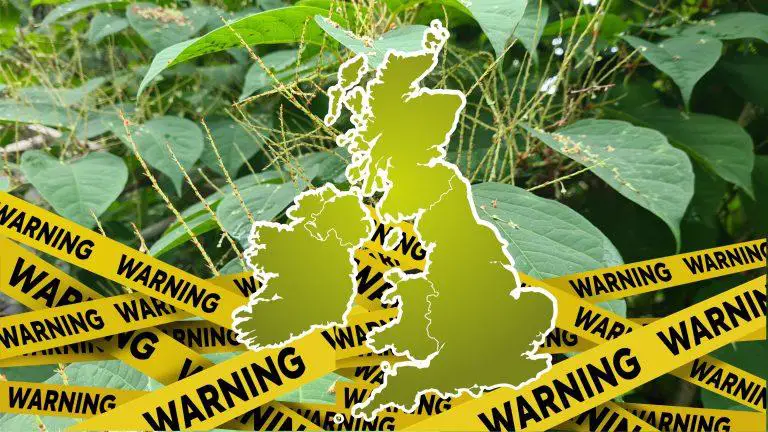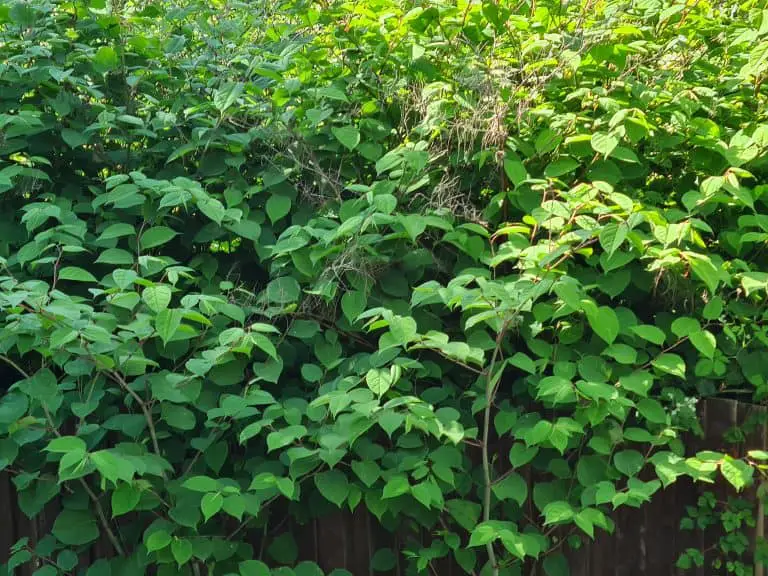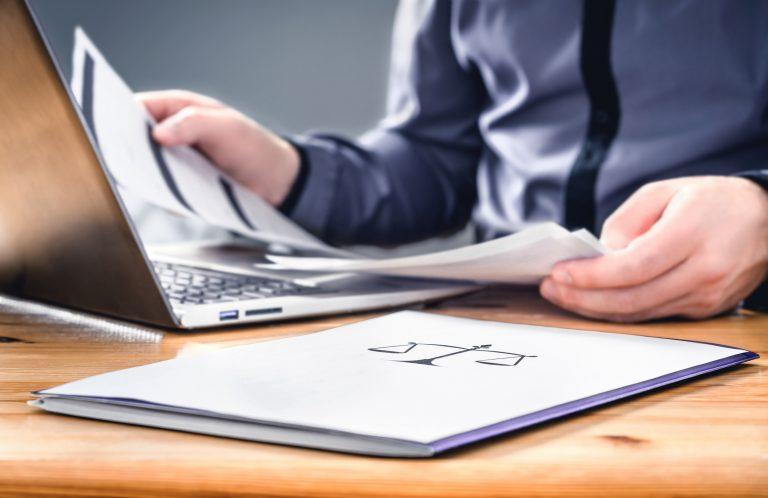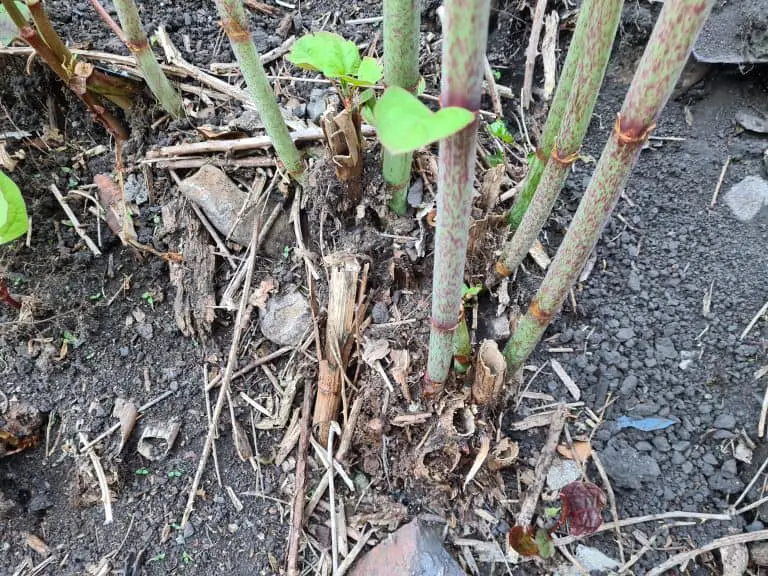The need to correctly identify Japanese knotweed has become much more of a problem these days due to the high number of properties being infested with this or something similar. You might have heard about Japanese knotweed or even come across it on your property.
Unfortunately, Japanese knotweed can be mistaken for other weeds such as Chinese knotweed. Unlike all the other similar plants, Japanese knotweed can cause massive damage to properties, water drainages, roadways, and railways.
This in-depth guide intends to point you in the right direction regarding identifying Japanese knotweed. We have described how the plant appears throughout the four seasons of the year and what you can do to get rid of it.
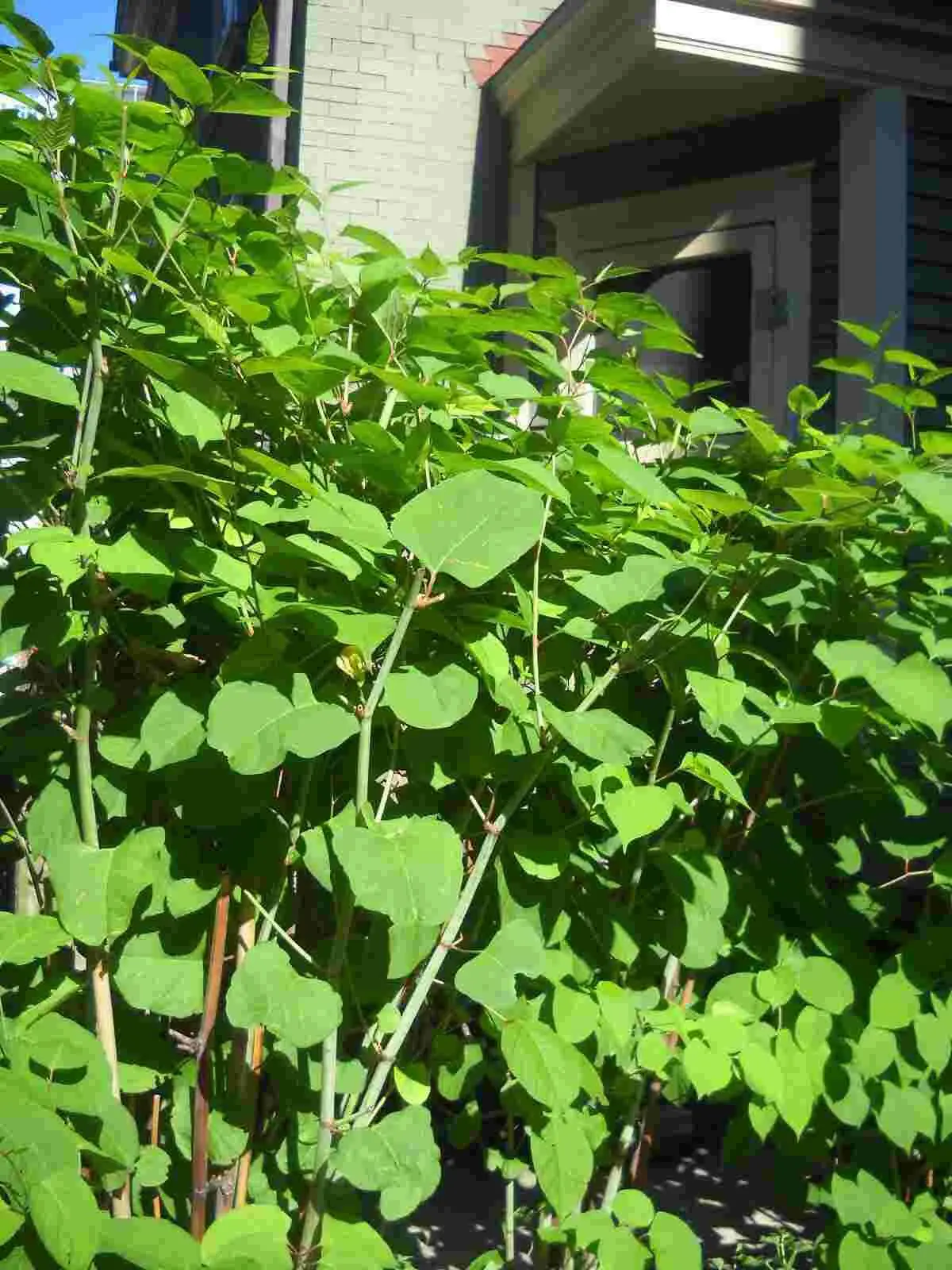
What is Japanese knotweed?
Japanese knotweed is one of the most invasive plants in the UK. The plant originated from East Asia; it was brought to the UK by botanist Phillipp Von Siebold in the late 18th century. The plant was purely for beautification purposes.
The Japanese knotweed grew so fast and proved to be extremely invasive and destructive. Since then, the plant has cost the UK economy a considerable sum of its treatment and eradication.
How does Japanese knotweed grow?
The weed is perennial, meaning that it grows back each year. It is spread through its extensive underground rhizome system. The plant thrives in any environment and is capable of penetrating hard surfaces hence interfering with infrastructure.

How do you identify Japanese knotweed?
Identifying Japanese knotweed is not easy. It would be best if you had some distinct vital information and a right eye. The plant has unique characteristics, but it is often confused with other plants. By knowing how to identify this plant, you will be in a better place to control it if you find it on your property.
Here are the characteristics of Japanese knotweed for easier identification:
Identify Japanese knotweed roots
This weed has a root system called rhizomes. They are similar to an underground stem that stores food and nutrients. It looks fresh all year round and snaps easily. The rhizomes can grow up to 2 meters and 7 meters horizontally.
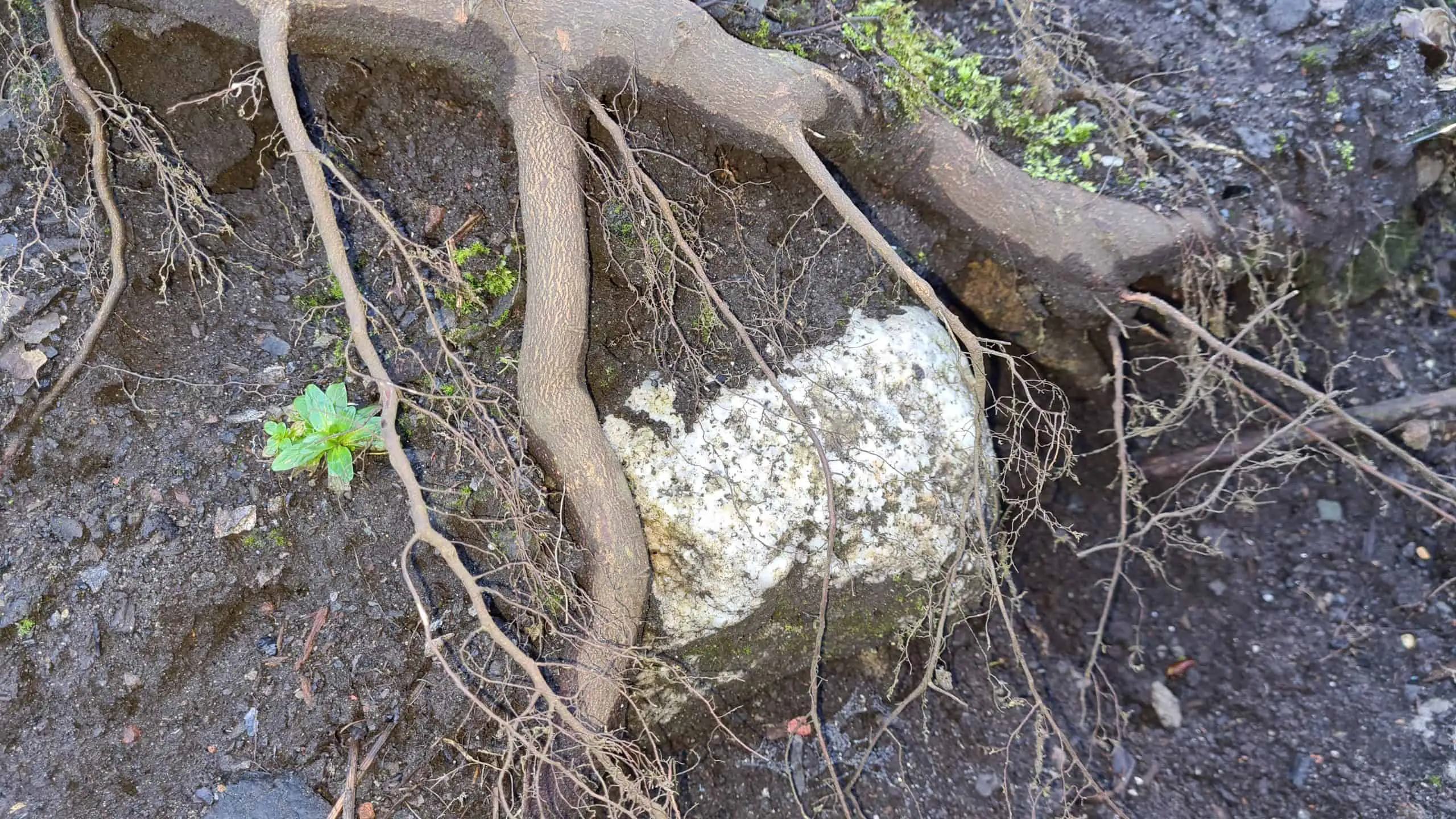
Identify Japanese knotweed stems
The stem of this weed grows up to 3 meters. The stems have nodes like those of bamboo plants. The leaves emerge from the nodes in a zigzag pattern. The stem is hollow on the inside.
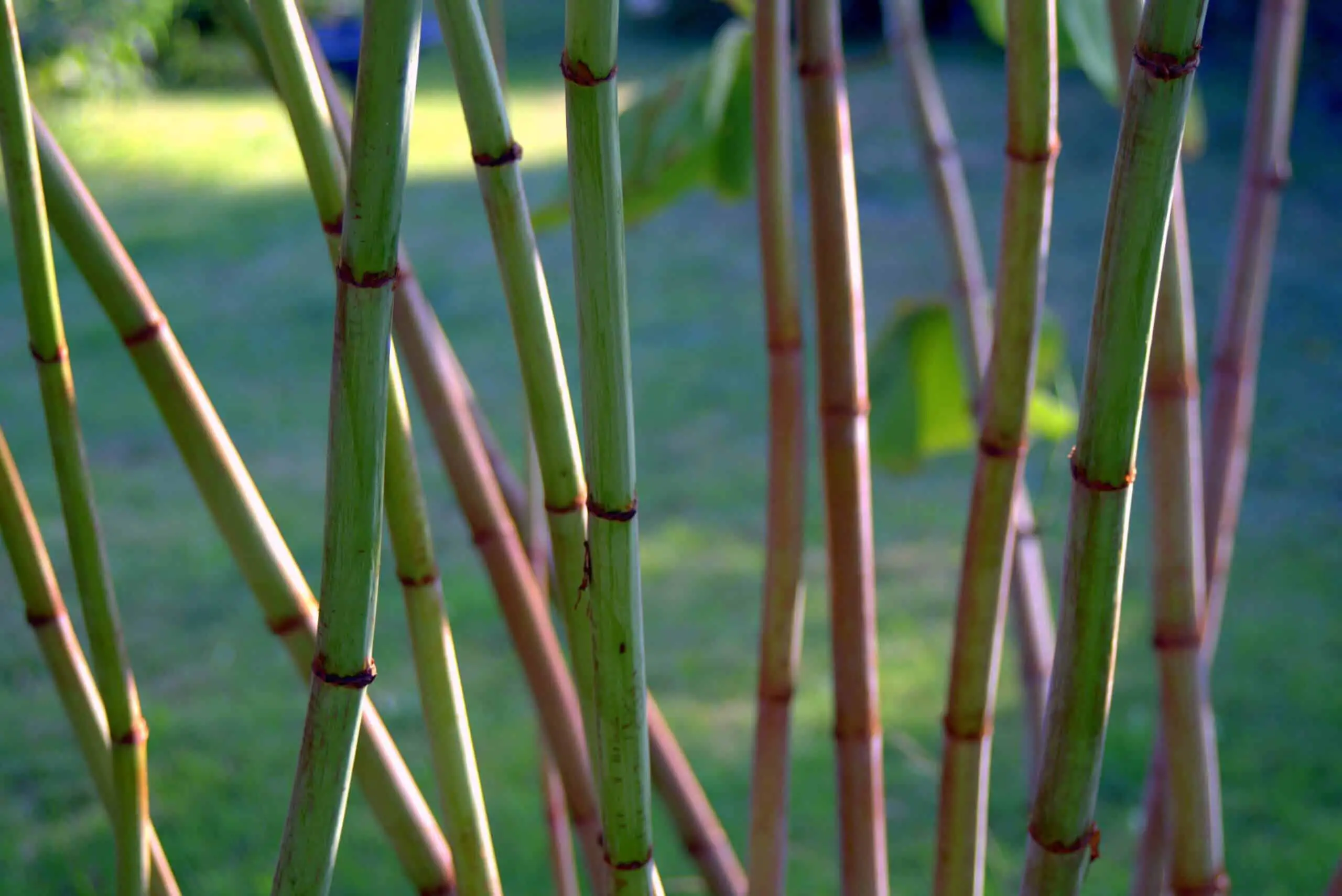
Identify Japanese knotweed leaves
The Japanese knotweed leaves are heart-shaped, and they are incredibly green and about 200mm long. The stem grows in a zigzag pattern.
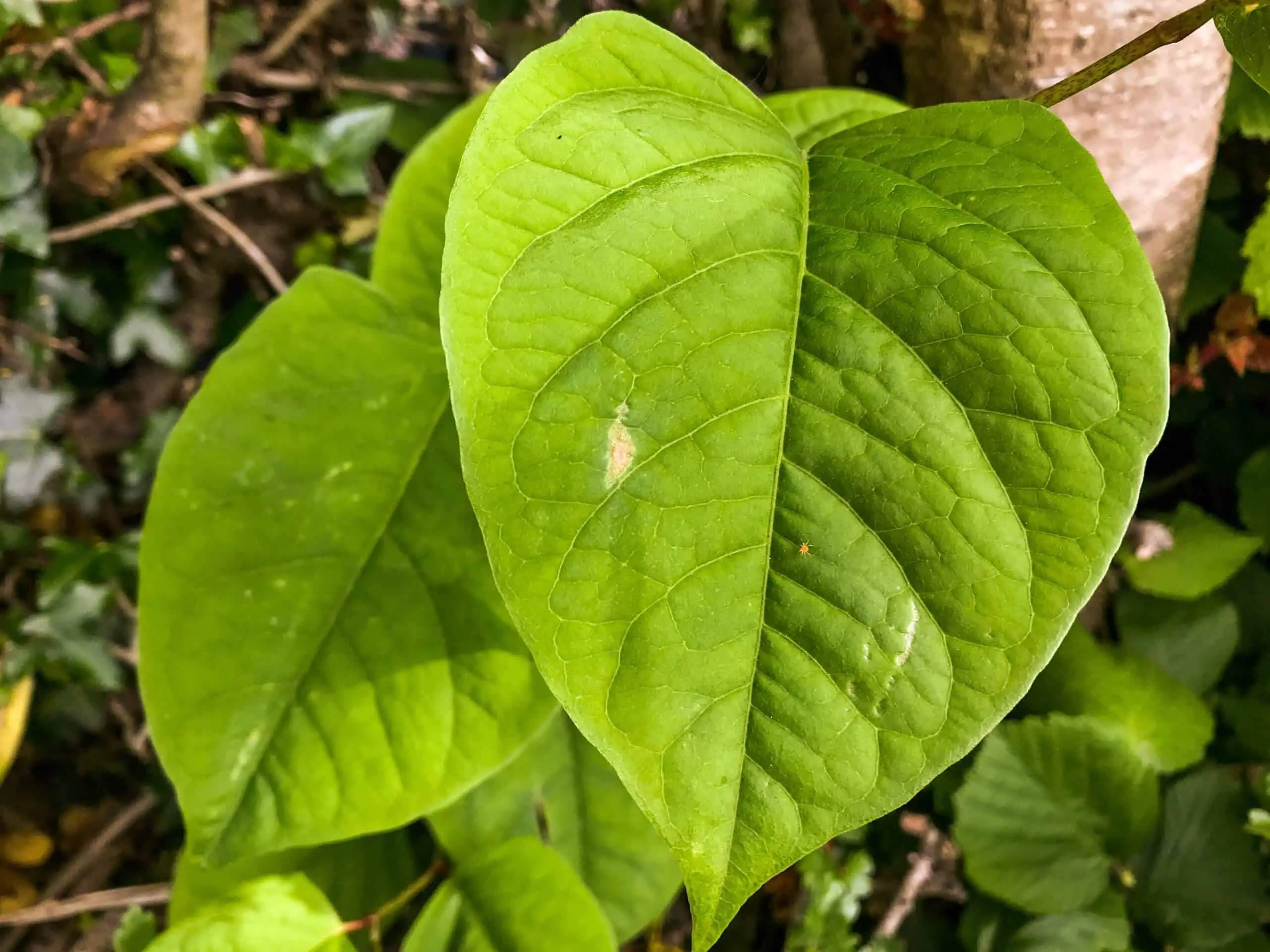
Identify Japanese knotweed flowers
The flowers form on elongated clusters that appear in early September. The groups are about 0.6 cm wide and up to 12cm long. The leaves are long with flowers, thus creating thick foliage.
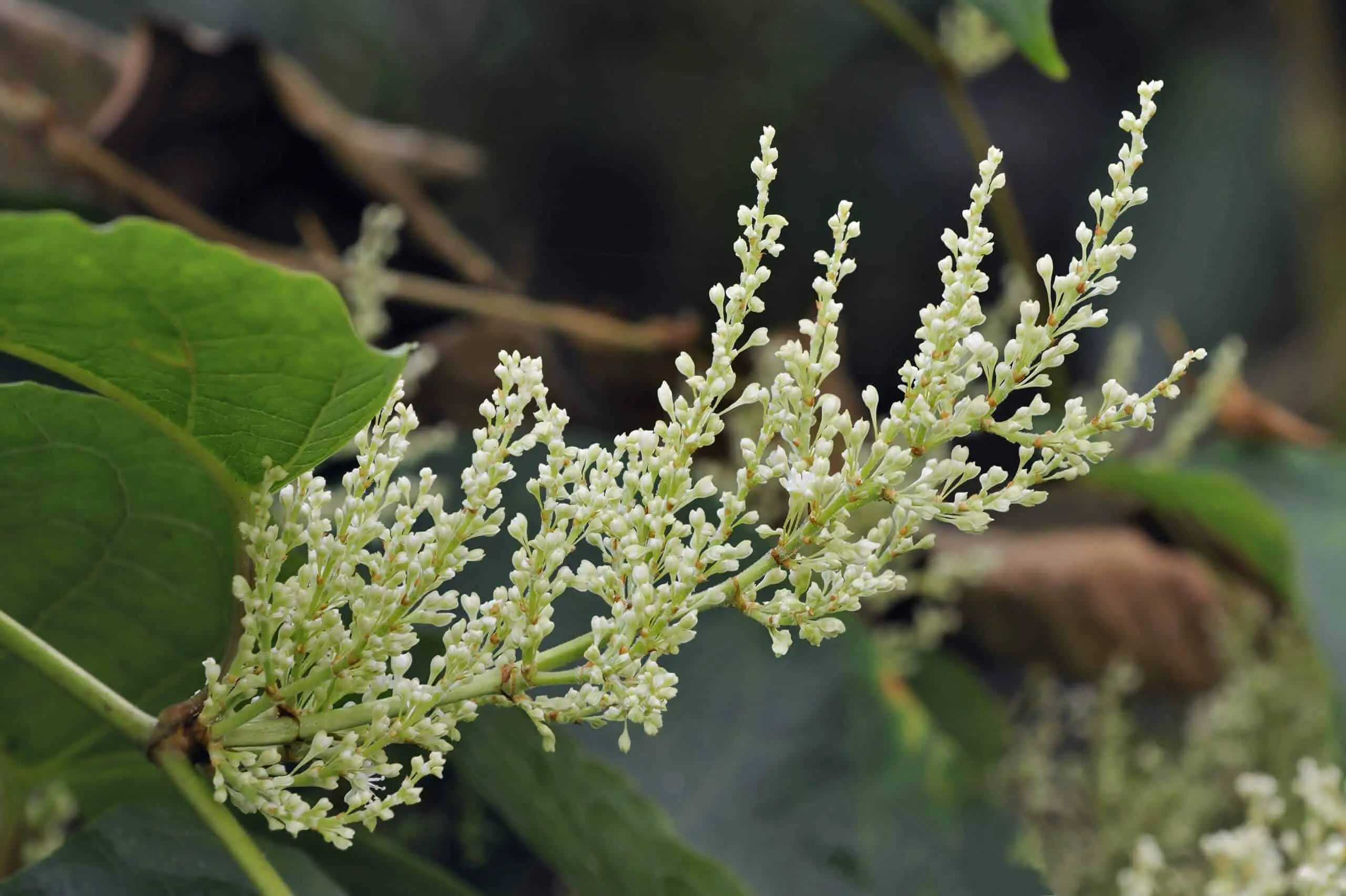
Japanese knotweed identification through the seasons
Japanese knotweed in spring
The Japanese knotweed proliferates during spring. The purple-red shoots emerge during this time; they look similar to asparagus spears. The leaves are dark green and rolled up. The stems can grow up to 3 meters high.
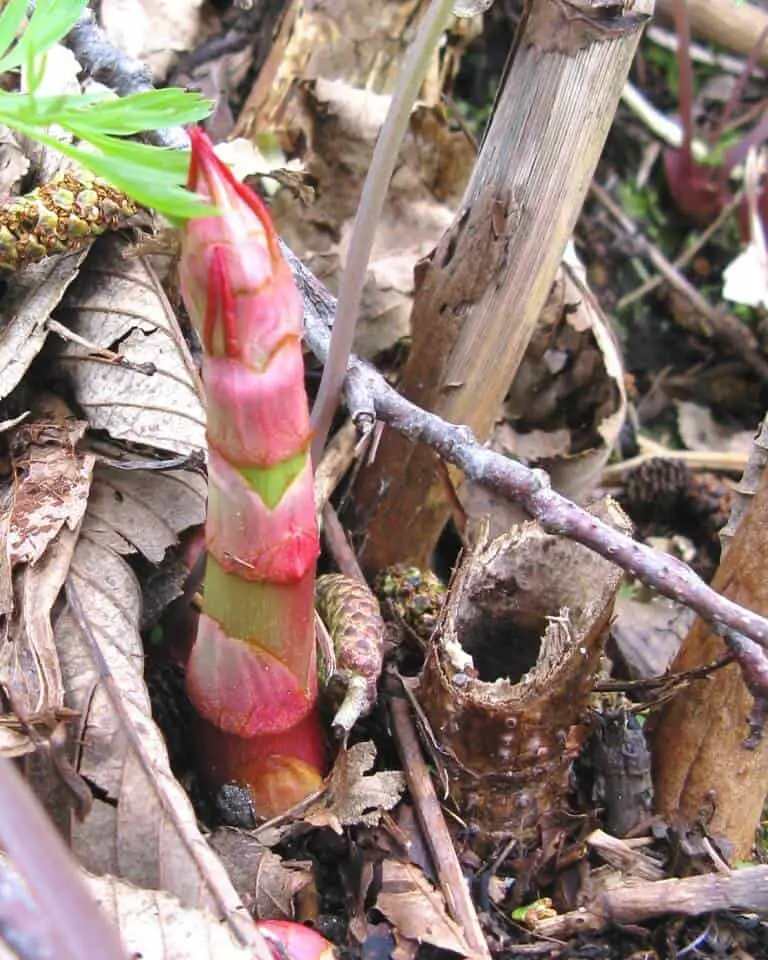
Identify Japanese knotweed in summer
The knotweed leaves are green and heart-shaped during summer. They measure about 20cm. Flowers appear towards the last weeks of summer and early autumn. The stems of this knotweed are hollow like those of bamboo.
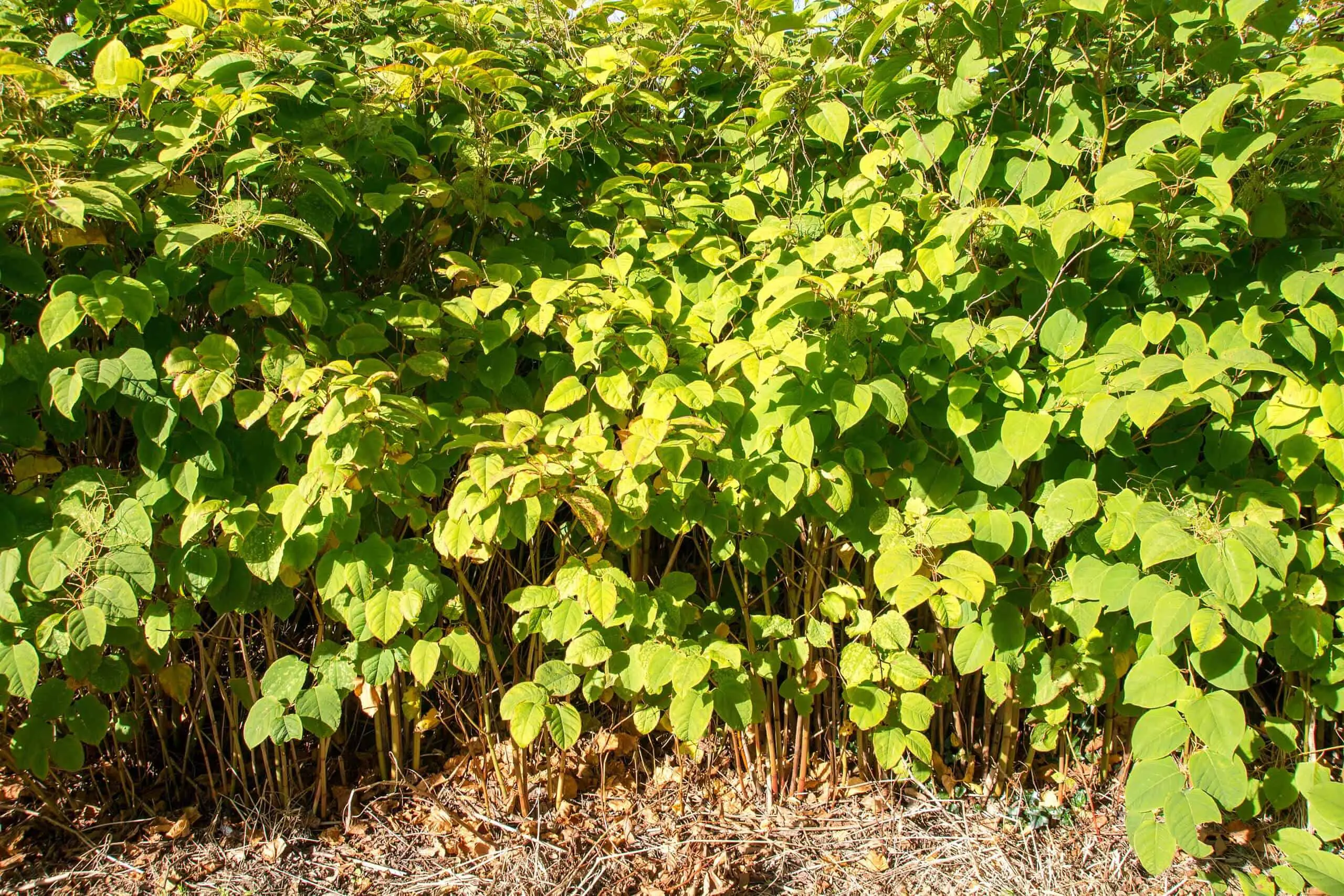
Identify Japanese knotweed in autumn
During autumn, the plant’s leaves become dense. The leaves start to turn yellow and fall off towards September. The plant remains standing at about 3 meters; the stems begin to turn brown towards the end of this season.
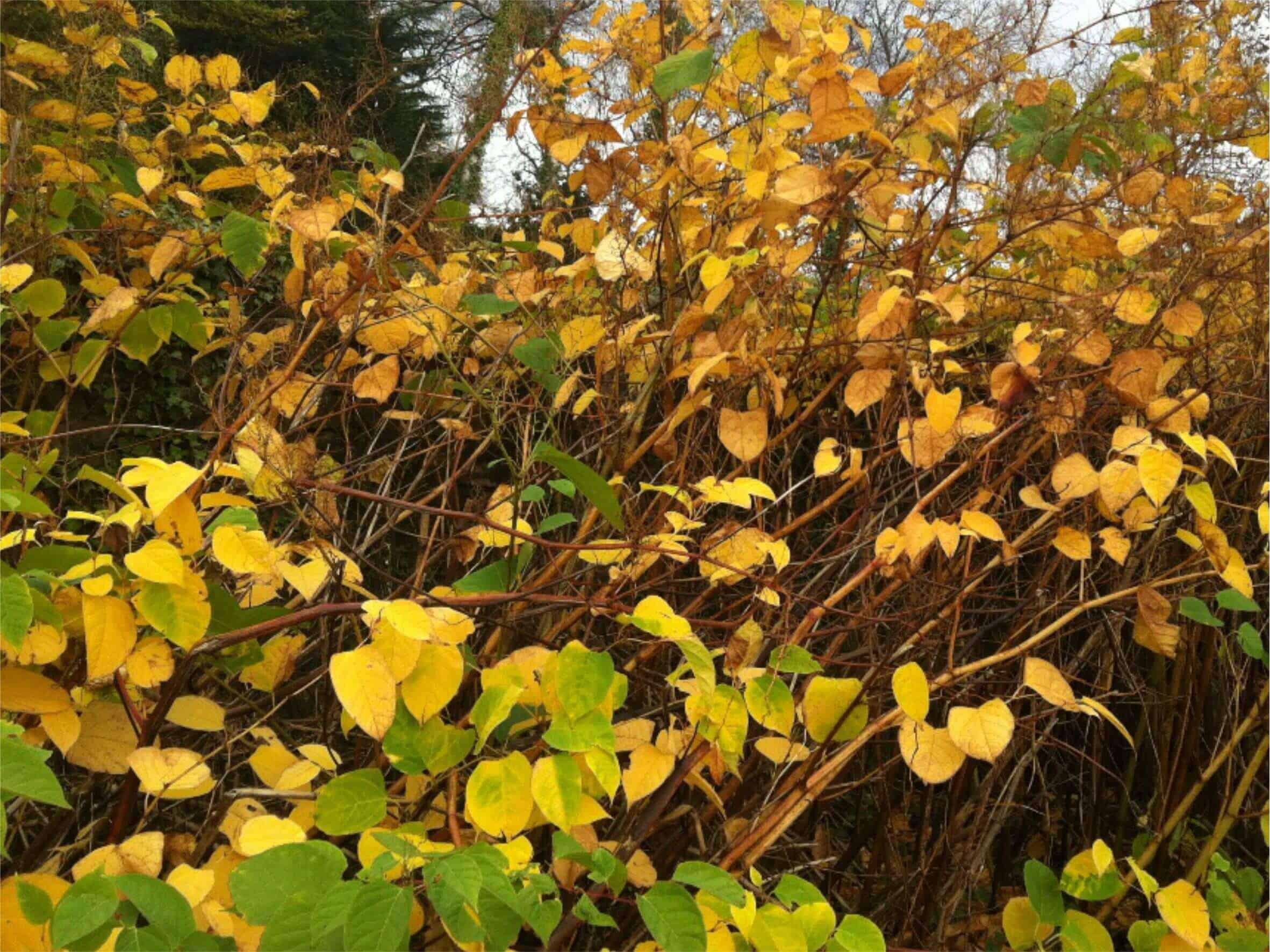
Identify Japanese knotweed in winter
The knotweed canes die off, and the weed becomes dormant towards the end of autumn and early winter. The leaves will turn yellow and later brown before they fall off. The canes are hollow and dark brown; they become more brittle and break easily.

Japanese knotweed UK laws
The UK laws state clearly that it is not an offence to have Japanese knotweed growing in your land, but it is against the law to cause it to spread. The knotweed is an invasive plant; it will spread so fast to the neighbouring area, causing disputes.
Section 34 of the Environmental Protection Act 1990 classifies Japanese knotweed as controlled waste and may lead to prosecution if not disposed of correctly. The trash must be taken to a public licensed landfill site, and you must have a license from a waste carrier.
Japanese knotweed removal
The Japanese knotweed is challenging to eliminate. You will need proper and timely treatment to get rid of the plant. The most effective treatment is glyphosate herbicide in higher doses. High doses of these herbicides are required in order to kill the weed completely.
The herbicides should be applied by an expert company or a certified company. It is advisable to hire a specialist, but if not, you will have to read the instructions correctly to minimize the risk to everyone around you.
Herbicides can kill the roots. However, they are large, and it is not likely that the herbicides will be able to penetrate into the plant to kill the cells. This is why the weed should be treated regularly until one is sure that the rhizomes are dead.
The second method of knotweed removal is excavation. This method depends on the size of the land. A vast land will take several days to excavate compared to a smaller area. You may not want to take this option unless you are sure you will completely eradicate the Japanese knotweed.
If you think you have Japanese knotweed on your property, you must take action immediately. The Japanese knotweed can damage your properties which might cost you a huge sum of money to remove.
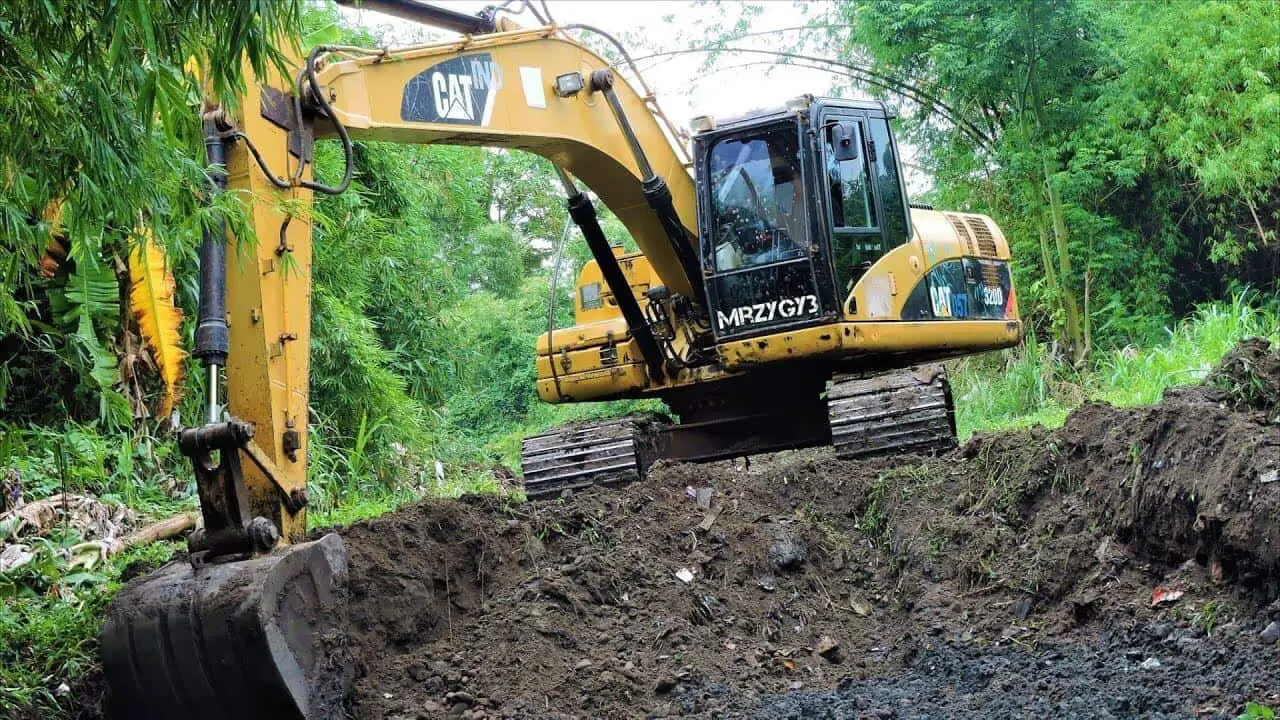
Want to know more in order to identify Japanese Knotweed?
Knotweed Removal aims to provide the most up-to-date information, help and advice for YOU to make informed decisions. If you are unsure or uncertain about how to proceed, please reach out to us and we will gladly come back and advise you as best we can.
Governmental advice can be found here and the UK law covering the removal of Japanese Knotweed as stated under the Wildlife and Countryside Act 1981 can be found here.
The best means to contact us is via our email – hello@knotweedremoval.tips
Do not forget we have a library of blogs covering many areas relevant to Japanese Knotweed, our free downloadable How-to Guides and Product Reviews on the latest methods being employed to eradicate or remove Japanese Knotweed.
Knotweed Removal, UK

